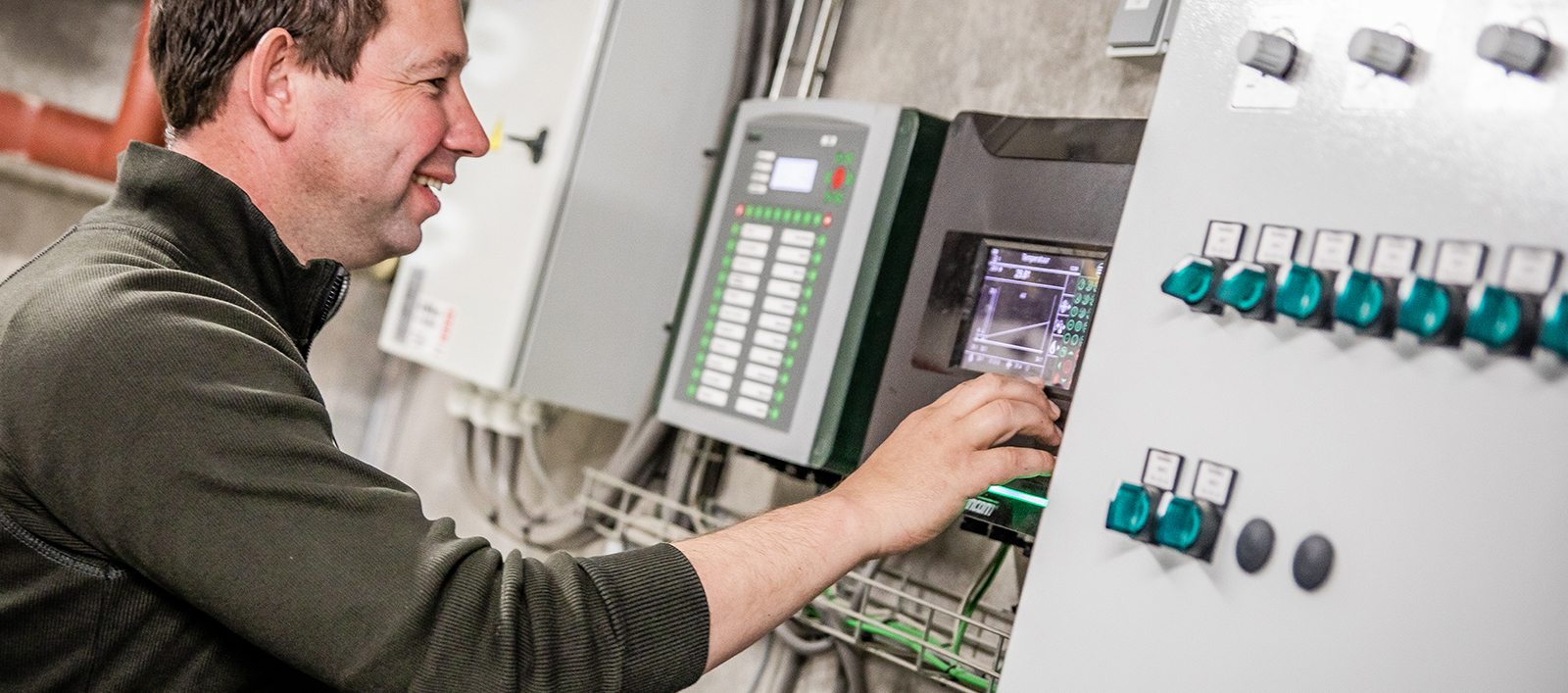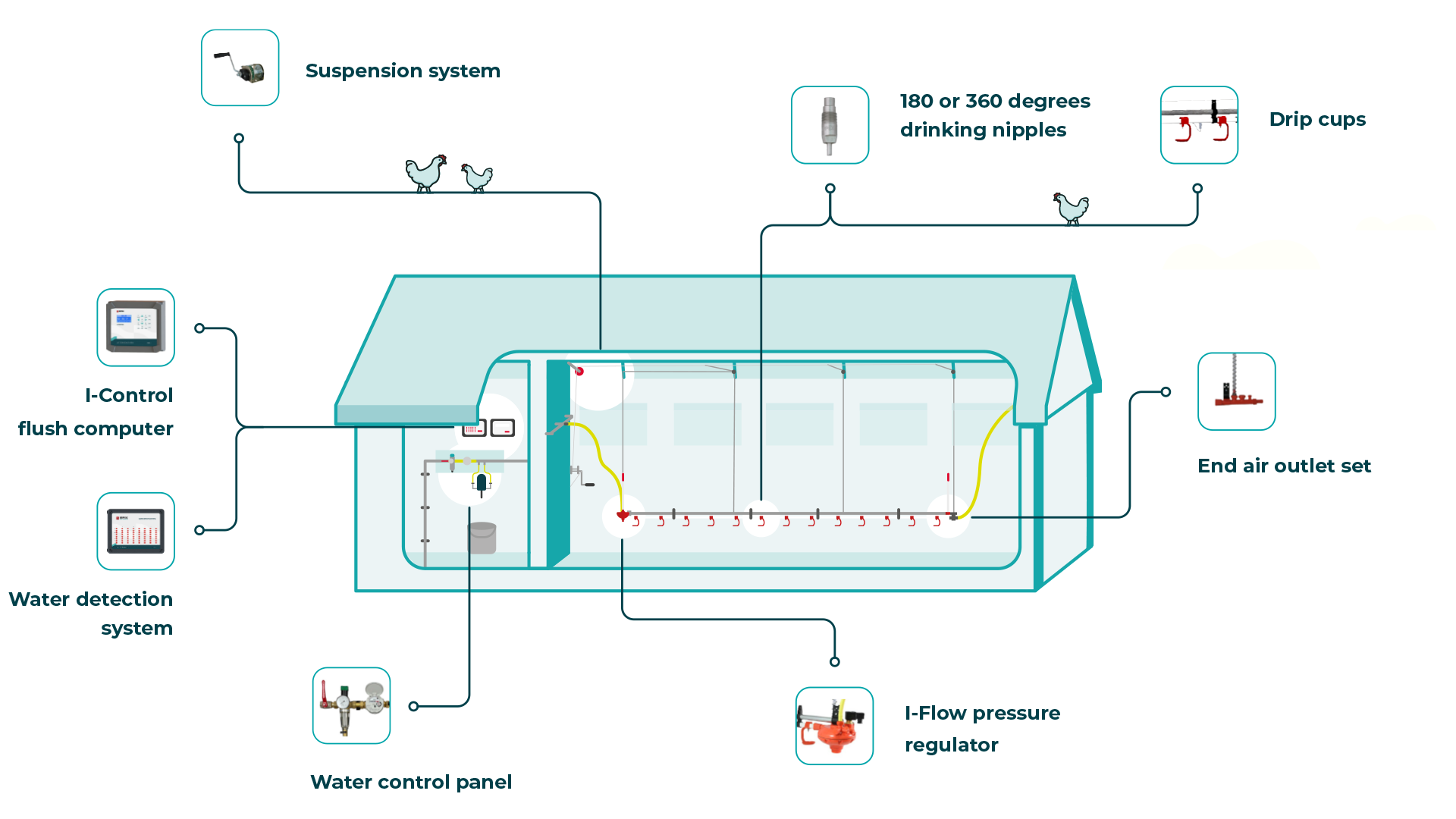
Do you wish to increase the production results of your poultry and the hygiene in your poultry house? If so, starting to use a closed drinking water system is an important step to take. Discover all benefits of a closed drinking water system and find out what you need to pay attention to when buying such a system.
Globally, poultry farmers have been using open drinking water systems for a very long time. Like, for example, drinking bowls, drinking troughs, or round drinkers. Chickens drink by scooping up the standing water with their beaks from these (semi-)open water sources.
In a closed drinking water system, however, the water doesn't get in contact with the open air. It travels from the source, through the mainline to the drinking lines, and is released when a chicken activates the drinking nipple by pecking at it with its beak.
Open drinking water sources become contaminated quickly. Feathers, feed residue, dust, or manure can end up in the water. The water will also warm up quickly. In warm and/or dirty water, bacteria and mold can quickly grow, damaging the chickens' health when ingesting this water. With a closed drinking water system, you can easily keep the water at the right temperature, so there is little chance of contamination from outside. In addition, the higher water quality contributes to the health of your poultry. Want to administer medication, vaccines, or additives? You can do this easily and uniformly with a closed drinking water system.

Open drinking water must usually be refreshed manually. This takes up a lot of time. It may also occur that the drinking water in (parts of) the poultry house has all been drunk, and the chickens no longer have access to water. This has an immediate negative effect on production results, whether this regards the growth of your broilers or the quality of the eggs. With a closed drinking water system, chickens always have access to sufficient drinking water. Since such a system supplies water automatically and can easily be flushed, you will also save labor costs.
When chickens drink from a (semi-)open drinking water system, they often spill the water. As a result, the litter in the poultry house gets wet, and the risk of footpad dermatitis increases. Wet litter and manure also lead to greater ammonia emissions in the poultry house. This may lead to respiratory tract infections.
With a closed drinking water system, water spillage is reduced because the drinking nipple closes immediately after the chicken has finished drinking. Therefore, a closed system contributes to a decrease in water usage and a healthier poultry house climate.
A closed drinking water system is connected to the mainline of the housing unit. A pressure-reducing valve on the water control panel reduces the water pressure to approximately 1.5 to 2 bar. The water is then transported into the poultry house to the drinking lines. These drinking lines are linked to a stabilization tube with multiple suspension points to ensure that the lines hang horizontally and do not sag. Each drinking line is equipped with a pressure regulator to adjust the water pressure and ensure that each drinking nipple dispenses sufficient water. These nipples release water when the chicken activates the pin in the nipple with its beak.


You now know the benefits of a closed drinking water system and what makes up such a system. Are you thinking about buying a closed drinking water system? Then these are important issues to bear in mind.
The quality of the system: Use sufficient suspension points to prevent the lines from sagging and ensure that the animals cannot sit on the drinking lines.



 Water quality & hygiene
Water quality & hygiene  Drinking water systems
Drinking water systems  Pig drinking water solutions
Pig drinking water solutions 